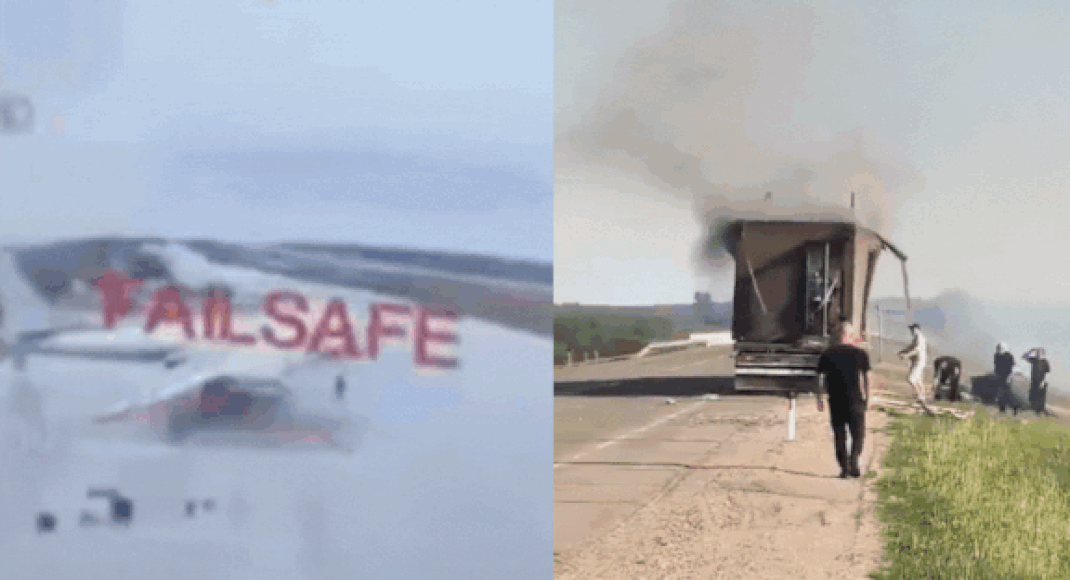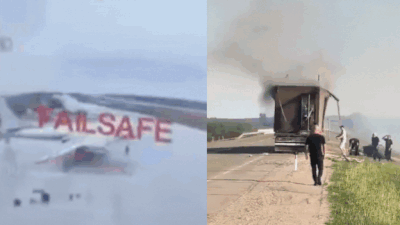In an unprecedented covert operation codenamed “Spider Web,” Ukraine’s Security Service (SBU) reportedly struck deep into Russian territory, damaging or destroying over 40 military aircraft at four separate airbases. The audacious drone assault, carried out with first-person-view (FPV) drones hidden inside trucks, targeted strategic Russian bombers thousands of kilometres from Ukraine, dealing what Kyiv claims is a multibillion-dollar blow to Moscow’s long-range strike capabilities.
According to The Kyiv Independent, the year-and-a-half-long operation was orchestrated by the SBU and personally overseen by Ukrainian President Volodymyr Zelenskyy and SBU chief Vasyl Malyuk. A source within the agency told the outlet that the drones were smuggled into Russia in advance, concealed under the roofs of wooden cabins mounted on trucks. At the moment of attack, the roofs were remotely opened, releasing the drones to fly short distances to their targets. Ukrainian officials estimate the damage at over $7 billion, with bombers such as the TU-95, TU-22M3, and A-50 surveillance aircraft reportedly among the assets destroyed.Also read: Ukraine strikes Russian nuclear bombers in first drone strike deep inside SiberiaThe Belaya airbase in Irkutsk Oblast more than 4,000 kilometres from Ukraine was one of the sites struck. Video obtained by AFP and AP but not independently verified, appears to show Russian aircraft in flames, with thick smoke rising above the tarmac. Other airbases reportedly targeted include Olenya in Murmansk Oblast, Ivanovo, and Diaghilev near Ryazan.Irkutsk Governor Igor Kobzev confirmed a drone strike on a military facility in Sredny and said the drones were launched from a truck mirroring Ukrainian accounts. “It’s the first attack of this sort in Siberia,” he said, urging residents to remain calm. Murmansk Governor Andrey Chibis also acknowledged “enemy drones” in the region, though without detailing the damage. Social media clips circulated online show drones emerging from trucks and heading toward military installations, further supporting the claims.The Associated Press cited a Ukrainian official confirming the strikes and reiterating that President Zelenskyy directly supervised the operation. The official also suggested that the drones, deployed from inside Russia, represented a significant escalation in the evolving domain of drone warfare. FPV drones can cost only a few hundred dollars, making this a highly cost-effective operation compared to the value of the aircraft hit.A post by Zelenskyy’s chief of staff, Andriy Yermak, featuring only a spider web emoji, appeared to hint at Kyiv’s involvement. Though Ukrainian officials have not formally claimed responsibility, the symbolism and public messaging underscore the operation’s strategic and psychological dimensions.AFP reported that the drone strikes coincided with escalating aerial assaults from both sides and came just a day before Ukrainian and Russian delegations were scheduled to meet in Istanbul for new ceasefire talks. President Zelenskyy confirmed that Defence Minister Rustem Umerov would lead the Ukrainian team, with demands for a “complete and unconditional ceasefire” and the return of prisoners and abducted children. Moscow has said it has formulated peace terms but declined to release them publicly.On the same day, Ukraine suffered a blow of its own, with a Russian missile strike on a training base killing 12 soldiers and wounding more than 60. Ukraine’s head of land forces, Maj Gen Mykhailo Drapatyi, later resigned.




